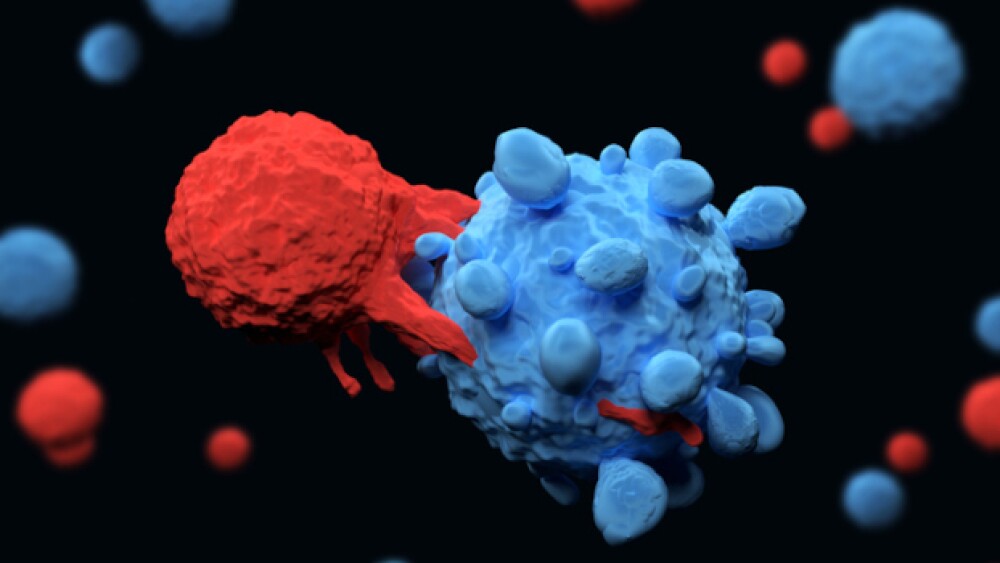Wave will discontinue development of WVE-004 in C9-associated ALS and frontotemporal dementia after the therapy failed to show any clinical benefit in a mid-stage trial.
Pictured: 3D illustration of degradation of motor neurons/iStock, Dr_Microbe
Wave Life Sciences continues to have issues with its antisense oligonucleotides. In 2021, the company shelved its lead antisense candidates for Huntington’s disease, and on Tuesday, it said goodbye to another being developed for ALS and frontotemporal dementia.
In a Phase Ib/IIa trial of 35 people with C9orf72 (C9)-associated ALS or frontotemporal dementia (FTD), WVE-004 failed to show any clinical benefit after 24 weeks, Wave reported. Based on these data and a lack of biomarkers likely to predict clinical benefit, the company is discontinuing development of the asset.
Five to 10% of ALS cases in the U.S. are familial, according to the NIH. Of these, 25% to 40% are caused by a hexanucleotide repeat expansion in the C9orf72 gene. Mutations in this gene have also been identified as a common cause of FTD.
WVE-004 was designed to lower levels of the C9orf72 protein. The therapy aims to rescue normal C9orf72 protein by selectively targeting transcriptional variants containing the hexanucleotide repeat expansion.
Mutations in the C9orf72 gene cause the accumulation of G4C2 RNA, which produce poly(GP) proteins. While studies have shown poly(GP) to be an effective biomarker by which to test therapies targeting C9orf72, Wave reported that reductions in this marker did not correlate to clinical benefit. The company did report “potent and durable target engagement,” with poly(GP) falling by up to 50%, perhaps providing positive signals for other programs.
“These data reinforce that our preclinical data on target engagement and pharmacology are translating in the clinic,” Paul Bolno, CEO of Wave, said in a prepared statement.
Bolno said he’d hoped for better after data from the Ib/IIa FOCUS-C9 study, announced in April 2022, showed target engagement across all treatment groups.
“Following our initial positive single dose data last year, we advanced WVE-004 with the hope that its potency and differentiated pharmacology may deliver a better result than C9orf72-targeting oligonucleotides discontinued by others in the field,” he said in the same statement.
ASO Hits and Misses
Antisense drugs targeting C9-ALS have had a bad run recently. In March 2022, Biogen and Ionis discontinued their ASO, BIIB078, after it failed to show clinical benefit in a Phase I trial.
But ASOs have also succeeded in ALS—namely, Biogen’s Qalsody (tofersen), which won FDA approval in April for superoxide dismutase 1 (SOD1)-ALS. The SOD1 protein is highly expressed in motor neurons, and the underlying SOD1 gene is mutated in up to 20% of familial cases of ALS and 2% of all cases.
“I think the genetic mutation that causes C9 ALS is much more complicated than SOD1,” said Merit Cudkowicz, chief of the neurology department at Massachusetts General Hospital and co-principal investigator of Biogen’s VALOR study, told BioSpace. “It is a hexanucleotide repeat, intronic—and that field is still learning the best way to approach therapies for C9 ALS.”
Cudkowicz is also an institutional consultant for Wave.
Cudkowicz said that she believes antisense therapies are still highly relevant for other genetic forms of ALS “and maybe still for C9 in other ways.”
Antisense therapies also have the potential to treat sporadic forms of ALS, Cudkowicz said, pointing to Cambridge, Massachusetts–based QurAlis, whose splice switching ASO, QRL-201, protects neurons against neurodegeneration, the company’s founder and CEO, Kasper Roet, told BioSpace in a previous interview.
In terms of what led to the lack of clinical effect for WVE-004, Bolno said that C9-ALS/FTD biology is complex, “and we can only conclude at this time that there may be other biological factors that impact outcomes beyond those addressed in the design of WVE-004.”
Looking ahead, Wave’s focus “remains on diseases where biomarkers correlated with functional outcomes are available,” Bolno told BioSpace via email. This includes a key readout from the Phase Ib/IIa SELECT-HD study in Huntington’s disease, which he said remains on track for the second half of this year. Bolno said that Wave would not exclude ALS as a therapeutic area in the future “if there was a clinically validated biomarker correlated with functional outcomes available to guide to clinical development.”
Heather McKenzie is a senior editor at BioSpace, focusing on neuroscience, oncology and gene therapy. You can reach her at heather.mckenzie@biospace.com. Follow her on LinkedIn and Twitter @chicat08.








